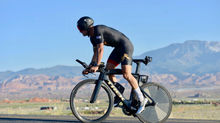Running Shoe Rotation
- Jason Lentzke
- Jun 3, 2023
- 3 min read
Updated: Aug 16, 2024

Think of your running shoes as tools. You want to have the right tool for the job in order to maximize your training. Every make and model shoe is engineered to perform a certain way. Learn your preferences and try a wide range of shoes that allow you to find what brands and models work for you.
Here’s why it’s important to have a second (or third) pair of favorite running shoes:
-The average runner lands with the force of three times their own body weight & it can take your shoes cushioning more than 24 hours to recover. The aging effect or breakdown of your running shoes can be influenced by various parameters such as body weight, run speed, foot strike pattern and the type of ground he/she trains on.
-Running in a fully recovered pair of shoes helps reduce injury and makes your shoes last longer. By allowing shoes at least a day off, you’re not running on the already-compressed cushion. Here is a wonderful study quantifying the effects and implications of running on "aged" running shoes.
-Variety is the key to injury-free running. Avoid overloading any one muscle, tendon, or ligament in the exact same way repeatedly. Be sure to change up your training by running different routes and surfaces, as well as wearing different shoes. No two running shoes are 100% identical, even the same models. There’s always a slight difference that offers a slightly different ride.
-If you’re a higher mileage runner or long distance triathlete, look into trying an entirely different model shoe for contrasting runs: easy runs vs. tempo runs, etc. Stay in the same category and cushion level that works for you, but branch out to another model or another brand. This creates even more variety, which helps strengthen different muscles, tendons, and ligaments.
-Look for a more cushioned shoe (Nike Invincible, New Balance Balos or New Balance More V5, Asics Novablast) for your long aerobic runs to absorb shock and give your feet a bit of a break. For more uptempo long distances or speed work, you’ll want a lighter, perhaps carbon/composite-plated shoe (HOKA Mach 6, New Balance SC Trainer, Saucony Endorphin Speed, Adidas Boston 12, Asics Superblast) that won’t weigh you down.
-If you want to be competitive on race day, you must wear a carbon-plated shoe "super shoe". If you choose not to, you are simply handicapping yourself. However, do not utilize your carbon-plated shoe as a daily trainer. The ultra stiff sole of most super shoes may lead to plantar fascia weakness or calf/achilles strain. BUT, you do want to use those super shoes for key speed workouts and those final key long runs.
Be wise: typical super shoes lose their "pop" after 100-150 miles, so conserve those miles. Some of our favorite raceday worthy super shoes: Nike Alphafly, Adidas Adios Pro, NB SC Elite, Asics Metaspeed Paris, HOKA Cielo X1, Saucony Endorphin Pro, On Cloudboom Strike.
-Varying your shoe selection (minimal vs maximal) based on the type of session can promote an eccentric contraction within the Achilles but may create damage to the tissue. This damage is ok, as long as we allow it to heal appropriately and maintain flexibility of the calf and achilles to accommodate for the increased available range of motion that a minimal shoe gives us. Don’t skimp on the eccentric calf raises and don't be afraid to get in the grass.

Most running or bone stress injuries stem from repetitive strain—too much of the same forces applied to vulnerable body parts. Vary your running routes along with your your shoe drop and cushion levels to protect your body. When the time is right, don’t be afraid to test new brands within the same category to stay injury-free.
Lastly, NEVER run in the same shoes two days in a row and retire your shoes after 300 miles. Stay healthy, rotate those shoes!





























Comments